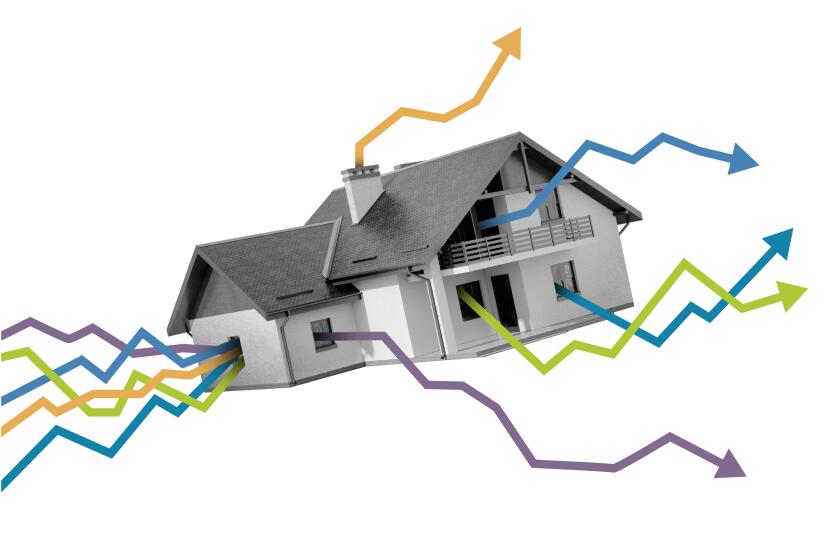Modular House Energy Efficient
- Share via
QUESTION: We plan to build an energy-efficient (some passive solar) 2,500-square-foot house. I am considering a new modular house and plan to do the finish work myself. Are modular houses very energy-efficient?
ANSWER: Modular houses can be extremely energy efficient and are typically very high-quality construction. They are built similarly to a site-built house, but in the controlled environment of a factory. With the strict quality control, modular houses are very airtight and well insulated for low air-conditioning and heating bills.
Standard modular house plans range from small ranches to attractive large, two-story contemporaries with over 3,000 square feet of floor space. Unless you were told that the house was modular, you would not know it from the interior or exterior. The manufacturers can easily modify standard plans to meet your unique house plans.
The cost of having a modular house built should be equal to or less than a traditional site-built house. In the assembly plant, it takes about seven days to build a house (90% complete when it arrives at your site.) Some manufacturers allow you to order a modular house in various degrees of finish so you can do some of the work yourself to lower costs.
Smaller modular ranch models are ideal for first-time house buyers. The overall finished price of the house can be as low as $40,000. Since they are modular, you can easily add rooms later as your budget allows.
Larger modular houses use many different modules connected side-by-side and stacked on top of one another. The top modules are often shipped with the roof structure attached.
Modular houses are very energy efficient for several reasons. Heavy lumber and extra fasteners and reinforcing straps are used for strength during transportation to your building site. For example, wall construction using 2x6 studs on 16-inch centers is common. The six-inch thick walls provide space for extra insulation.
The building materials are stored indoors out of the weather. Also, certain areas of the lumber can be nailed and fastened together better when the walls aren’t setting on a foundation. This allows for very airtight construction with little settling which may cause future air leaks.
The exteriors of modular houses can be finished in the factory with siding, or at the site with stucco, brick, etc.. Stucco is a particularly energy-efficient exterior wall finish because it further reduces air leakage through the walls.
You can write to me at the address below for Utility Bills Update No. 352 listing addresses and telephone numbers of 25 manufacturers of modular houses and exterior diagrams and floor plan layouts of six energy-efficient modular houses. Please include $1.50 and a self-addressed business-size envelope.
Cracking Glass Blocks Need to Be Reset
Q: I have energy-efficient glass-block windows for security and several are cracking at the corners. How can I stop the cracking?
A: The blocks may crack from moisture getting into the mortar joints. If it freezes and expands, it can crack the glass. Different expansion rates between the glass and the wood or metal frame can also cause cracks.
You should carefully remove the old mortar and remove the blocks. When resetting the blocks in the frame, set them in an expansion joint or soft caulk. Make sure there are no voids in the mortar where moisture may collect between the blocks.
More to Read
Sign up for Essential California
The most important California stories and recommendations in your inbox every morning.
You may occasionally receive promotional content from the Los Angeles Times.





